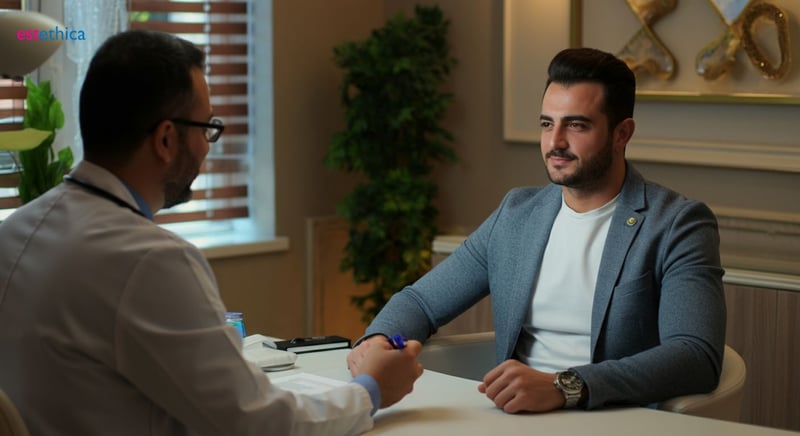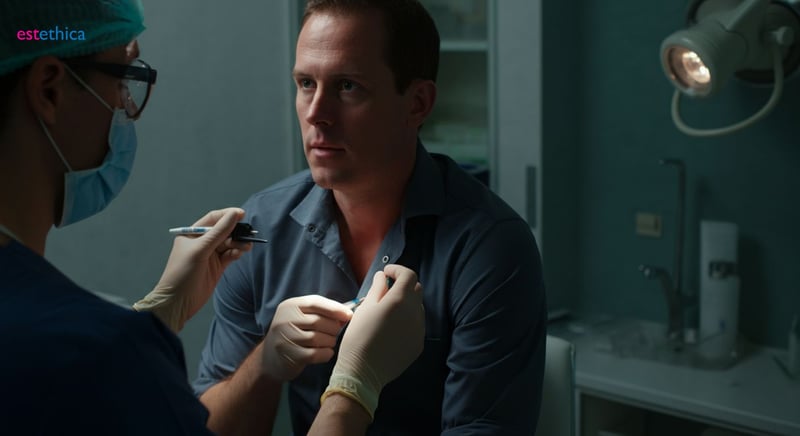Maximize Size: Understanding Penis Enlargement Surgery
Explore your options in penis enlargement surgery and make an informed choice.
Penis enlargement surgery is a significant procedure often pursued by those looking to increase their penis size for personal reasons or to address conditions such as micropenis or Peyronie's disease. This blog aims to provide a comprehensive overview of penis enlargement surgery, comparing surgical options, discussing recovery, and examining all available methods to ensure you make an informed choice.
Is Penis Enlargement Surgery Right for You?
Evaluating the Appropriateness of Penile Augmentation
Choosing to undergo penis enlargement surgery, often considered a form of male enhancement, is a deeply personal decision that demands careful deliberation. Candidates often include individuals experiencing medical conditions like micropenis or Peyronie's disease, conditions that can significantly impact their daily lives and sexual function. The psychological impact of such procedures is considerable, as the results can profoundly affect self-esteem and body image. It is paramount that anyone considering this surgery is psychologically prepared for both the potential benefits and the inherent risks.
A comprehensive consultation with a qualified healthcare provider, especially one experienced in phalloplasty, is an essential step in this process. This consultation should include a thorough assessment of the patient's medical history, a discussion of their suitability for the procedure, and the establishment of realistic expectations regarding the outcomes. estethica Global emphasizes the importance of setting clear, achievable goals to align patient expectations with the potential results of the surgery. This involves a frank discussion about the limitations of the procedure and the possible variations in individual results.
Situations Where Surgery May Be Considered
- Medical Necessity: Corrective measures for congenital conditions affecting penis size.
- Functional Improvement: Addressing sexual dysfunction caused by physical anomalies.
- Psychological Well-being: Alleviating distress related to body image concerns.
Key Steps in Determining Candidacy for Surgery
- Medical Evaluation: Comprehensive review of medical history and physical examination.
- Psychological Assessment: Evaluation to ensure readiness for potential psychological impacts.
- Realistic Expectation Setting: Detailed discussion of potential outcomes and limitations.

Phalloplasty vs. Penile Augmentation: The Key Differences
Understanding the Nuances of Phalloplasty
Phalloplasty represents a complex field within penis enlargement surgery, often involving extensive reconstructive techniques designed to create or reshape the penis. This procedure is typically recommended for individuals with congenital abnormalities, those who have experienced trauma, or transgender men seeking gender affirmation surgery. Unlike simpler augmentation methods, phalloplasty can involve the use of skin grafts from other parts of the body, such as the forearm or thigh, to construct a functional and aesthetically pleasing penis. The goal is not only to enhance size but also to ensure the possibility of standing urination and, in some cases, the ability to achieve penetrative sex.
The surgical approach in phalloplasty is highly individualized, tailored to meet the specific anatomical and functional needs of each patient. For example, a patient with significant scarring from a previous injury might require a more intricate approach to ensure adequate blood supply and nerve function in the reconstructed penis. A transgender man, on the other hand, might have different priorities, such as achieving a specific size and shape that aligns with his gender identity. estethica Global approaches each phalloplasty with a focus on delivering personalized care that addresses the unique needs and desires of every individual, emphasizing natural-looking results and long-term functionality.
Key Considerations for Penile Augmentation
- Girth Enhancement: Primarily focuses on increasing the circumference of the penis.
- Minimally Invasive Options: Often involves less invasive techniques such as fat transfer or dermal fillers.
- Aesthetic Improvement: Aims to enhance the visual appearance without necessarily altering functionality.
Surgical Factors Influencing Procedure Choice
- Anatomical Requirements: The degree of restructuring needed based on the patient's current anatomy.
- Functional Goals: Whether the primary aim is to improve sexual function or overall appearance.
- Recovery Expectations: The patient's capacity to adhere to the recovery timeline and potential complications.

Navigating Penis Enlargement Surgery Recovery Time
The Initial Post-Operative Phase in Penile Augmentation
The period immediately following penis enlargement surgery is crucial for laying the groundwork for successful healing and optimal outcomes. Patients typically experience swelling and bruising, which are normal physiological responses to the surgical trauma. Managing pain effectively through prescribed medications is a key component of post-operative care during this phase. It is also essential to adhere strictly to the surgeon’s instructions regarding wound care, which usually involves keeping the surgical site clean and dry to minimize the risk of infection. Regular check-ups with the surgical team are important to monitor progress and address any concerns promptly.
During the initial recovery weeks, abstaining from sexual activity and strenuous physical exertion is critical to avoid complications that could hinder the healing process. The body’s natural healing mechanisms necessitate a quiescent environment to knit tissues together properly. For instance, activities such as heavy lifting or vigorous exercises should be avoided, as these can increase blood flow to the area and potentially cause swelling or bleeding. estethica Global provides patients with detailed guidelines tailored to their specific procedure, ensuring that they understand precisely what to expect and how to best support their body’s recovery.
Post-Operative Care Essentials
- Managing Swelling: Elevating the surgical area reduces fluid accumulation.
- Pain Management: Use prescribed medication to control discomfort effectively.
- Infection Prevention: Keep incision sites clean and dry per surgeon’s instructions.
Phases of Progressive Recovery
- Early Healing: Focus on rest and adherence to medication schedules.
- Intermediate Recovery: Gradual reintroduction of light activities, avoiding strain.
- Full Recuperation: Return to normal activities as cleared by the surgeon, with continuous monitoring.

Male Enhancement: Exploring All Available Options
Non-Surgical Alternatives for Penile Enhancement
Beyond the realm of surgery, numerous non-surgical approaches promise male enhancement, providing alternatives for those hesitant about invasive procedures. Vacuum pumps, for instance, create a temporary enlargement by drawing blood into the penis, while penile extenders aim to gradually increase size through traction over time. Topical treatments, often containing vitamins and herbal extracts, also market themselves as solutions for enhancing penis size. Though these methods may appeal to individuals seeking less drastic alterations, scientific evidence supporting their long-term effectiveness remains limited.
While these non-surgical enhancements may offer some benefits, it’s important to manage expectations. Vacuum pumps and extenders require consistent and diligent use to maintain any gains, and the results are generally less significant compared to surgical options like phalloplasty or penile augmentation. Topical treatments, on the other hand, often lack substantial clinical evidence to support their claims, with many experts suggesting that their primary effect is hydration, leading to a temporary increase in girth. For those considering these alternatives, consulting with a healthcare provider is essential to understand potential risks, manage expectations, and ensure safe usage.
The Importance of Medical Consultation
- Evaluation of Suitability: Determining if non-surgical methods align with individual needs and goals.
- Understanding Limitations: Gaining a clear understanding of the expected outcomes and potential drawbacks.
- Safety Considerations: Preventing misuse and minimizing potential adverse effects.
Comparing Non-Surgical Techniques Effectiveness
- Vacuum Pumps: Temporary enlargement through induced blood flow.
- Penile Extenders: Gradual traction-based size increase.
- Topical Treatments: Hydration for minimal visual enhance penis size.
Understanding Penis Enlargement Surgery: What You Need to Know
Advanced Phalloplasty and Augmentation Delivering Enhanced Patient Outcomes
Patient-Focused Approach Ensuring Safety and Satisfaction in Enhancement Procedures
Frequently Asked Questions
Who is a good candidate for penis enlargement surgery?
What are the key differences between phalloplasty and penile augmentation?
What is the typical recovery time after penis enlargement surgery?
What non-surgical options are available for male enhancement and are they effective?
Achieve your aesthetic goals with estethica's expert consultations and personalized treatment plans.
📞 Book Your Free Consultation!